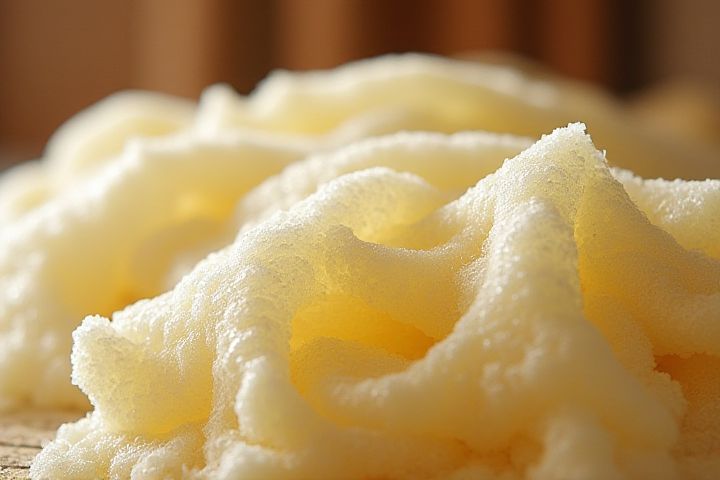
House insulation should be strategically installed in areas that maximize energy efficiency and comfort. Begin with the attic, as this space is crucial for preventing heat loss in winter and heat gain in summer. Walls, both exterior and interior, should also be insulated to maintain temperature control and enhance soundproofing. Don't overlook the basement and crawl spaces; insulating these areas can significantly reduce energy costs and improve overall home comfort. For optimal performance, consider using materials like fiberglass batts, spray foam, or rigid foam boards, tailored to each specific area.
Where To Install House Insulation
Attic
Installing insulation in the attic is crucial for enhancing energy efficiency and keeping your home comfortable. A well-insulated attic can reduce heating and cooling costs by up to 20%, contributing significantly to overall energy savings. Fiberglass batts or spray foam are popular choices, with R-values ranging from 30 to 60, depending on your climate zone. Ensure you cover all spaces, including vents and around ducts, to prevent heat loss and maintain consistent indoor temperatures.
Exterior walls
Exterior walls are a critical area for installing house insulation, as they significantly impact your home's energy efficiency. Using materials like fiberglass batts, foam board, or spray foam can help achieve an R-value of 3.7 to 6.5 per inch, depending on the insulation type. You should ensure proper sealing around windows, doors, and any penetrations to prevent air leakage, which can diminish your insulation's effectiveness. Installing insulation in exterior walls not only enhances thermal resistance but also contributes to noise reduction and increases your home's overall comfort.
Basements
Installing house insulation in basements is crucial for energy efficiency and moisture control. Focus on insulating the walls, especially if they are below grade, using rigid foam board or spray foam to prevent heat loss and condensation. Ensure the ceiling joists are also insulated, as this can minimize cold air infiltration from the living space above. Proper vapor barriers should be installed to protect against moisture, enhancing indoor air quality and comfort in your home.
Crawl spaces
Crawl spaces require proper insulation to enhance energy efficiency and protect your home from moisture and temperature fluctuations. Install fiberglass or foam board insulation on the walls of the crawl space, ensuring it extends from the foundation to about an inch below the subfloor. It's crucial to use vapor barriers on the ground and walls to prevent moisture intrusion, which can lead to mold growth and structural damage. Make sure to seal any gaps around vents and pipes to maintain optimal insulation effectiveness and improve your home's overall comfort.
Interior walls
Installing insulation in your interior walls significantly enhances energy efficiency and soundproofing. For optimal results, target areas like bedrooms, bathrooms, and shared walls between living spaces, where noise reduction is paramount. You should consider using materials such as fiberglass batts, which provide an R-value of around 3.1 to 4.3 per inch, or spray foam insulation, which can achieve an R-value of 6.5 to 7 per inch for superior thermal resistance. Ensure proper installation techniques, including sealing gaps with caulk and using insulated electrical outlets, to maximize the effectiveness of your insulation efforts.
Floors over unheated garages
Installing house insulation in floors over unheated garages is essential for temperature regulation and energy efficiency. This area can often lead to significant heat loss, so it's advisable to use materials such as fiberglass batts or spray foam insulation, providing an R-value of 19 to 30 depending on the thickness. Ensure to cover the entire floor surface, paying special attention to seams and edges for optimal effectiveness. Proper installation can reduce energy costs by up to 20%, improving your home's comfort year-round.
Rim joists
Rim joists, which are the horizontal framing members at the edge of your home's foundation, are crucial for energy efficiency and moisture control. Installing insulation in rim joists can reduce heat loss by up to 30%, significantly improving your home's overall thermal performance. It's recommended to use foam board insulation or spray foam, as these materials seal gaps effectively while providing a high R-value. Ensure you cover all exposed areas and use a vapor barrier to prevent moisture buildup, enhancing your home's durability and comfort.
Ductwork
Insulation is crucial for enhancing energy efficiency in ductwork, particularly in areas like attics, basements, and crawl spaces where temperature variations can significantly impact performance. Installing insulation around ductwork can prevent heat loss or gain, improving system efficiency by up to 20%. Use R-8 insulation for ducts located in unconditioned spaces to ensure optimal thermal resistance. Always ensure a tight air seal before insulating to maximize the benefits of your insulation investment.
Around windows and doors
Installing insulation around windows and doors is essential to enhance energy efficiency and maintain comfortable indoor temperatures. Begin by sealing gaps and cracks with weatherstripping or caulk to prevent drafts, which can significantly affect your heating and cooling costs. Consider using foam insulation or rigid board insulation for larger openings, ensuring a snug fit to optimize thermal performance. By prioritizing these areas, you can effectively reduce energy loss and improve your home's overall comfort and sustainability.
Plumbing pipes
To effectively insulate plumbing pipes, focus on areas where they are exposed to temperature fluctuations, such as basements, attics, and crawl spaces. Insulating hot water pipes can significantly reduce heat loss, improving energy efficiency by up to 20%. Use materials like foam pipe insulation or fiberglass sleeves, ensuring they cover any exposed sections entirely. Pay special attention to joints and fittings, as these are common spots for heat loss, and consider installing insulation on both hot and cold water lines for optimal results.
